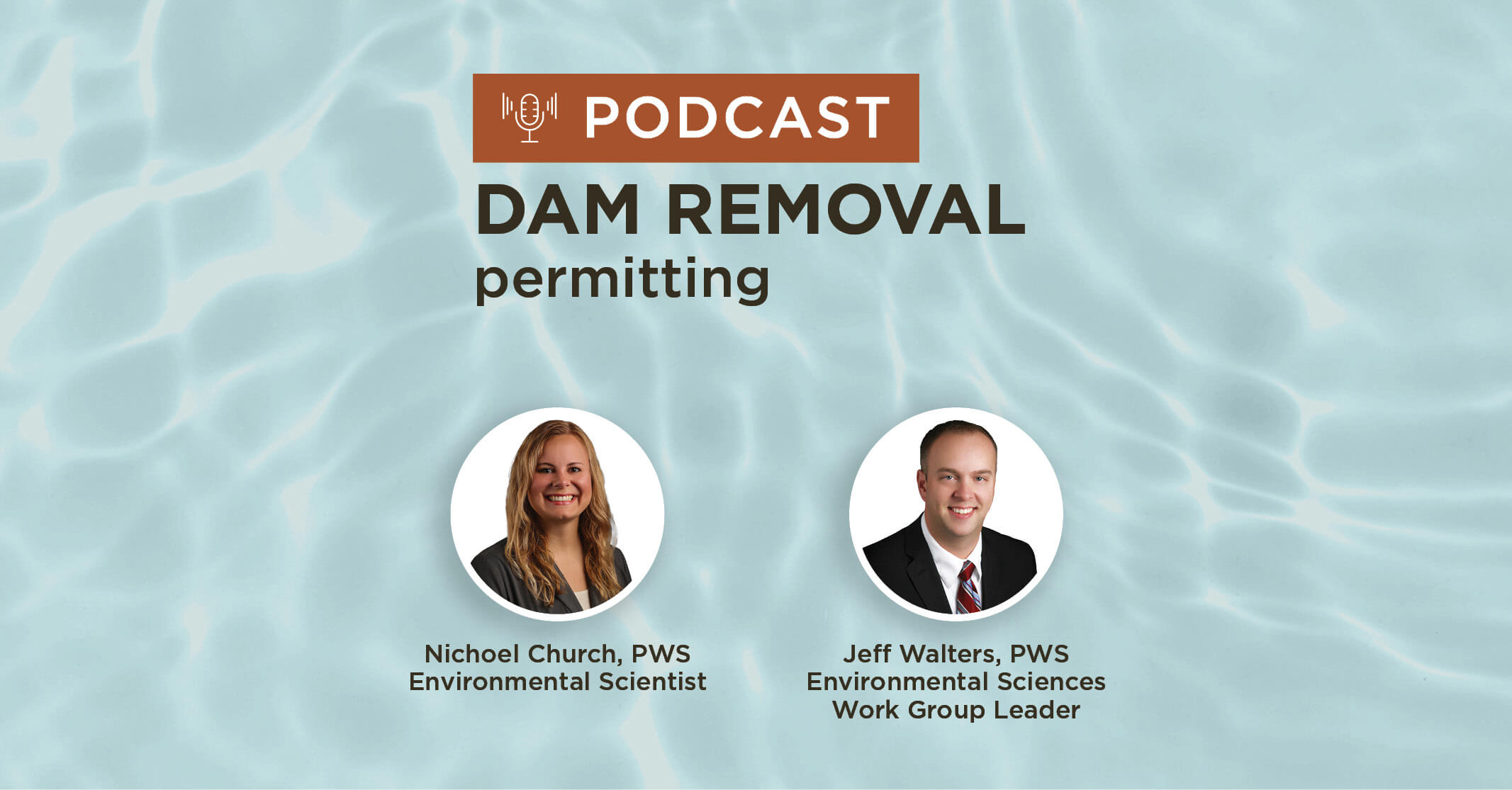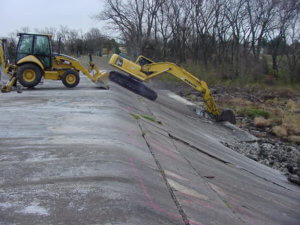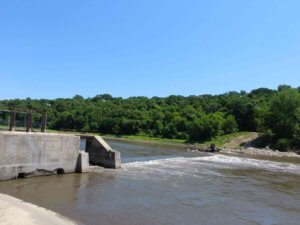Dam Removal Permitting Requirements & Regulatory Coordination
Proactively addressing regulatory challenges associated with dam permitting requirements or modifications helps prevent delays and added expenses that can occur during a project. Early coordination and communication with the various stakeholders, including regulatory agencies, speed up the review process while providing stakeholders a voice in the project.
Two of our environmental experts, Jeff Walters, PWS, and Nichoel Church, PWS, sit down and discuss the regulation intricacies that many clients find difficult throughout dam projects. They’ll explain how we work with agencies to get your project approved, get permits in place in a timely manner, and move forward with construction at an appropriate season. Based on years of experience and success, these two share their insights into this detailed and time-consuming process and how they’re prepared to leverage their knowledge for your project’s benefit.
Podcast Agenda
- Dam Removal Permitting Timeline and Ideal Project Start Date (0:18)
- Obtaining Permits to Remove a Dam (4:30)
- Successes in Dam Modification and Removal Permitting (6:26)

Nichoel Church, PWS
Environmental ScientistNichoel Church, PWS
Environmental ScientistMitigation banking development, Wetland delineation, Section 404 permitting, Endangered Species Act (Section 7 Consultation)

Jeff Walters, PWS
Environmental Sciences Work Group LeaderJeff Walters, PWS
Environmental Sciences Work Group LeaderWetland & Stream Delineation & Mitigation, 404 Permitting, Natural Resources Surveys, Lake & Stream Restoration
Dam Removal Permitting Timeline and Ideal Project Start Date
Jeff Walters (0:18)
The Department of Natural Resources, Fish and Wildlife Service, Army Corps of Engineers, EPA, and the State Historical Preservation offices are all going to have their chance at reviewing these types of projects. Whether it’s for funding or just simply for permitting, there’s going to be a
high level of involvement. And what we historically like to do is get them involved early, let them know what we’re doing, how we want to do it, and the approximate timeframe so that they can tell us how long it’s going to take and what they may need for their review process.
Nichoel Church (0:53)
And when Jeff says early, we mean preliminary design. Because if we need an individual permit from the Corps of Engineers, it takes over a year. If we need a Department of Natural Resources floodplain permit, that takes at least six months. So we definitely want to get our plans in front of the agencies as soon as we can, even if they change. That way, they’re aware of what we are proposing early on, and we can understand their requirements for permitting.
Jeff Walters (1:21)
Right. Once we get through that concept and preliminary design phase, we have the opportunity then to meet with these agencies again submit our applications for 404 and floodplain permits.
The other thing we wanted to do early, especially with some of these bigger, older dams, is get our cultural resources investigations completed and get that information submitted to SHPO (State Historic Preservation Office) as soon as possible. A lot of these big dams are well over 50 years old. They may have some historical context to the community, and because they have a historical context to the community or they were uniquely built or designed, they may be eligible to be on the national register of historic places. We found that out with the City of Fort Dodge and SHPO with the hydroelectric dam. They were understanding that the dam needed to be removed, but their purview is the recognition and preservation of historic sites. And the hydroelectric dam being about 100 years old, was a modern industrial success. It provided a lot of context to the community. It served a great community purpose.
Nichoel Church (2:38)
There’s a hydroelectric park right next to it.
Jeff Walters (2:40)
Right. There’s just a multitude of layers with that type of project where if you can’t get SHPO concurring early on or figure out a way for mitigation, they have the opportunity to shut you down. They mean well, but they’re trying to protect their asset. So SHPO and the Corps of Engineers and EPA, they’re going to work concurrently at that federal level because of the federal laws, and they need to be in that process.
Nichoel Church (3:12)
Right, and that’s just it. The same thing with Fish and Wildlife Service and Section 7, they’re going to take their time to review all species under their purview, whether it’s the Threatened & Endangered Species Act or fish, muscles, invertebrates. There are several factors that they can take into consideration, and with the DNR, if it is on an unnamed stream, you might have to get sovereign lands reviewed. You might have to get their own Threatened & Endangered Species office involved to complete a biological survey. They want their data as well. So if it is a larger dam, you’re probably going to have more permitting hoops to jump through than if it was a private dam. You still have permitting that you need to complete, but usually, a private dam is on a smaller system such as a femoral or intermittent channel or a farm pond.
Jeff Walters (4:02)
So if we can get these organizations, regulatory agencies, and the applicant, which could be a city, county, private landowner, if we can get them at the table and develop that partnership and relationships with everyone, we’re going to have much, much greater success and that’s at all levels, local, state, federal, the consultant and the applicant.
Nichoel Church ( 4:26)
And don’t forget the community.
Jeff Walters (4:28)
Don’t forget the community, of course.
Obtaining Permits to Remove a Dam
Jeff Walters (4:30)
So Nichoel briefly discussed the permitting process. We’re going to need, more than likely, a 404 permit from the Corps of Engineers. We’re going to likely need a floodplain permit from the state. They could need local floodplain permits from a city or a county if they have jurisdiction.
We want to complete that permitting process in between our preliminary design and final design. We don’t want to do it too early because if there are big changes in the preliminary design, we may have to go back and ask for a change within the permits. We don’t want to do it too late in the final design because that doesn’t afford these regulatory agencies the opportunity to comment, provide feedback, and maybe interject some thoughts that make the project more successful.
Nichoel Church (5:16)
Right.
Jeff Walters (5:17)
And removal is a great option. It’s generally the best option because you’re retaining or you’re getting the watershed back to its pre-construction condition, original flows, restoring that floodplain. But there is certainly the opportunity for modification, and that’s where we come into play. We want to look at the system, we want to look at the dam, and we want to make sure that there are options.
Nichoel Church (5:42)
Whether it’s full removal or modification, design, permitting and construction are all there. Each one of those is a component of both processes. The only difference is with modification, a portion of the dam remains in the stream.
Jeff Walters (5:57)
And there has to be just cause for either situation, whether it’s for removal or modification.
Nichoel Church (6:03)
For Fort Dodge, it’s important to also mention that while SHPO did require us to leave a portion of the dam in place for historical significance, it also saved on construction costs. So while that did take additional permitting time, we were afforded that amount of savings with the contractor. They didn’t have to remove that section of the dam.
Successes in Dam Removal & Modification Permitting
Jeff Walters (6:26)
Yeah, and I’ve gone through this type of permitting for dam removal projects or wetland delineation streams delineations for about 20 years now, and I’ve had a 100 percent success rate, and I don’t find it to be that challenging as long as we all come together, the regulatory community as well as the applicant and the consultant and there’s a general consensus and understanding that here’s what we want to do. And on these types of projects, the Corps of Engineers and the DNR are really willing to take that extra step because they understand the importance of dam removal. While they may not explicitly state that it’s for safety. They know there’s this big-time safety issue. They also recognize the high, high benefit to water quality and just restoring that watershed.
Nichoel Church (7:21)
To elaborate on what Jeff said, it’s not difficult, it is time-consuming. Part of our job is to be the “in-between” between the agencies and our clients. Our client doesn’t need to know the Clean Water Act to get a permit from the Corps of Engineers. That’s our job. We will work with the agencies to get your project approved to get that permit in place in a timely manner so we can move forward with construction at an appropriate season, which for dam removal is usually in the winter. It is very important for us to get in front of those agencies early so that they can understand our project and what we’re trying to accomplish.


